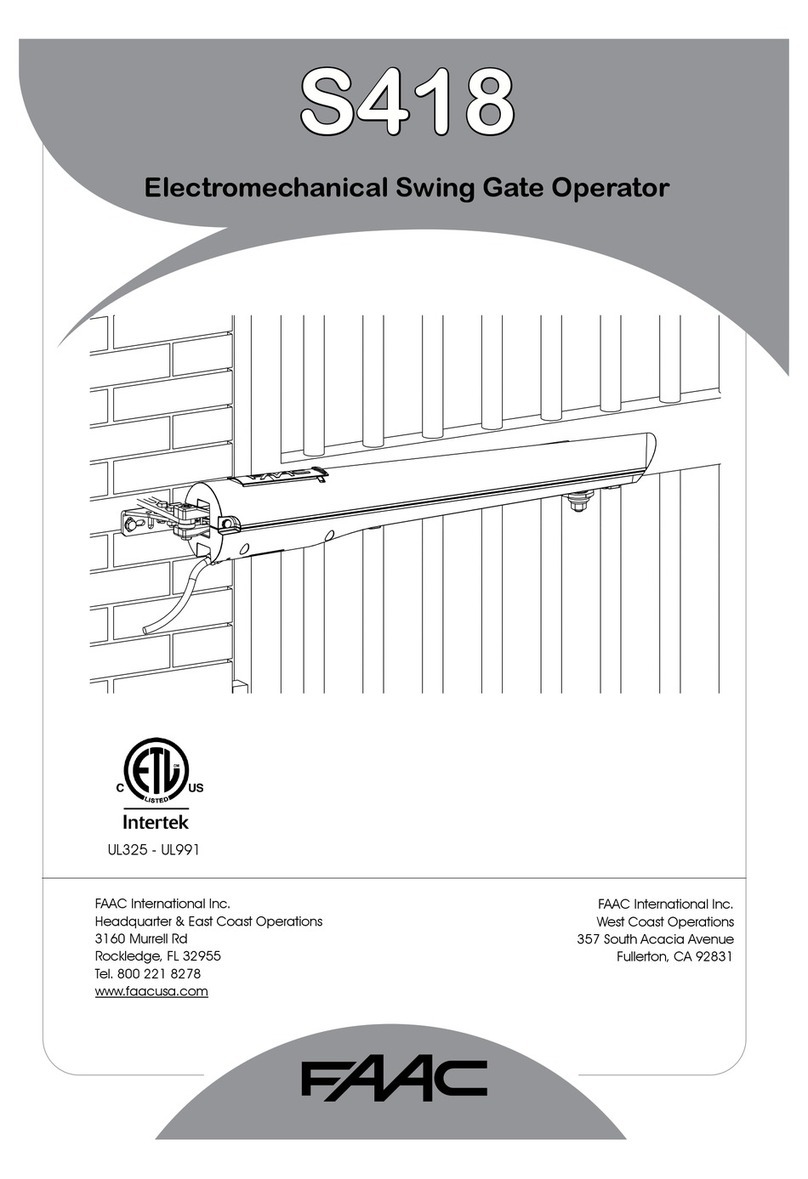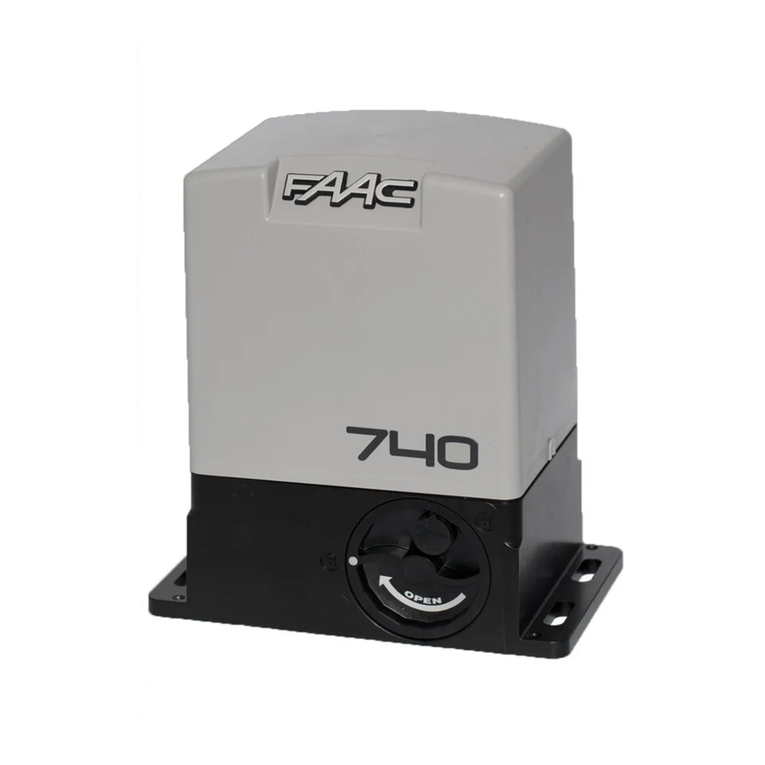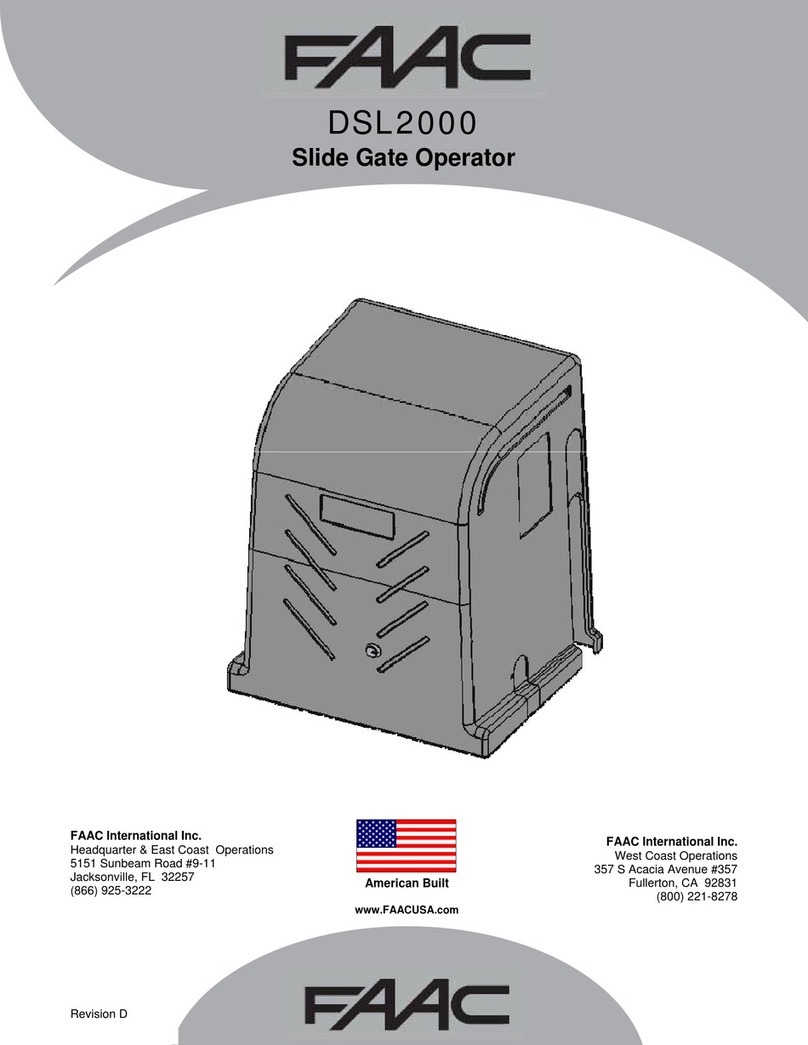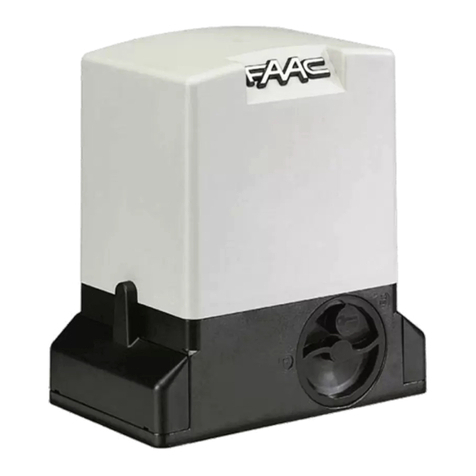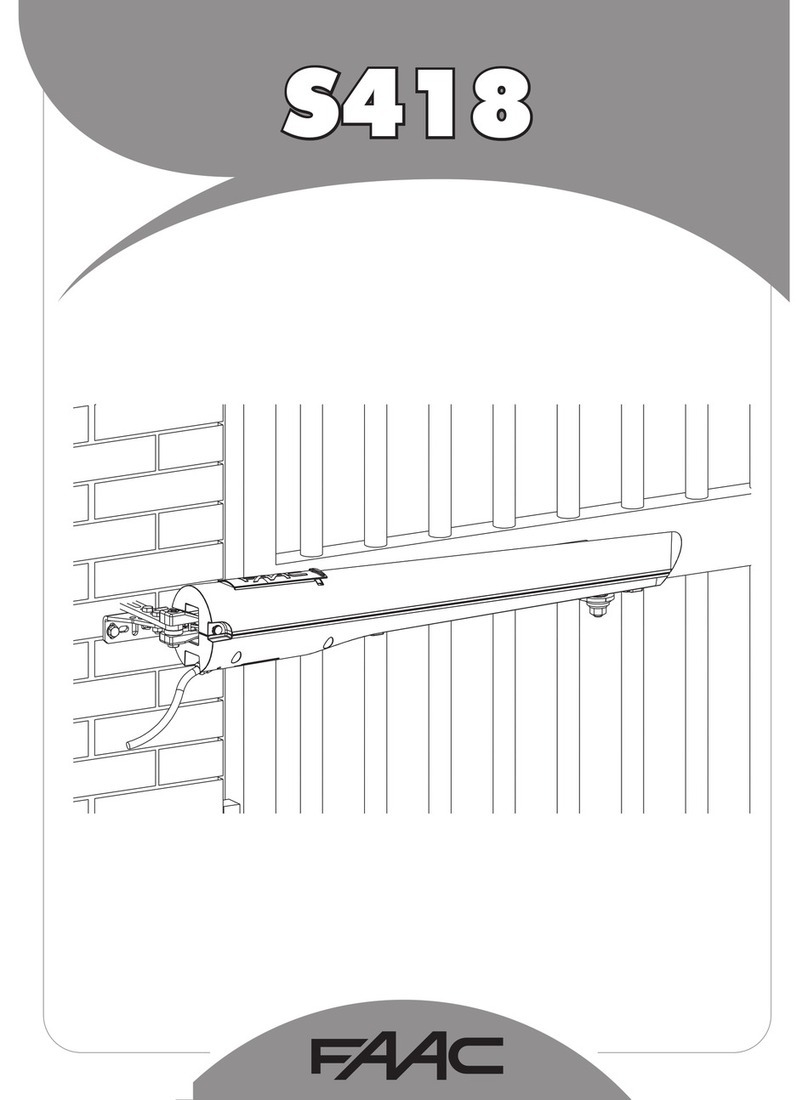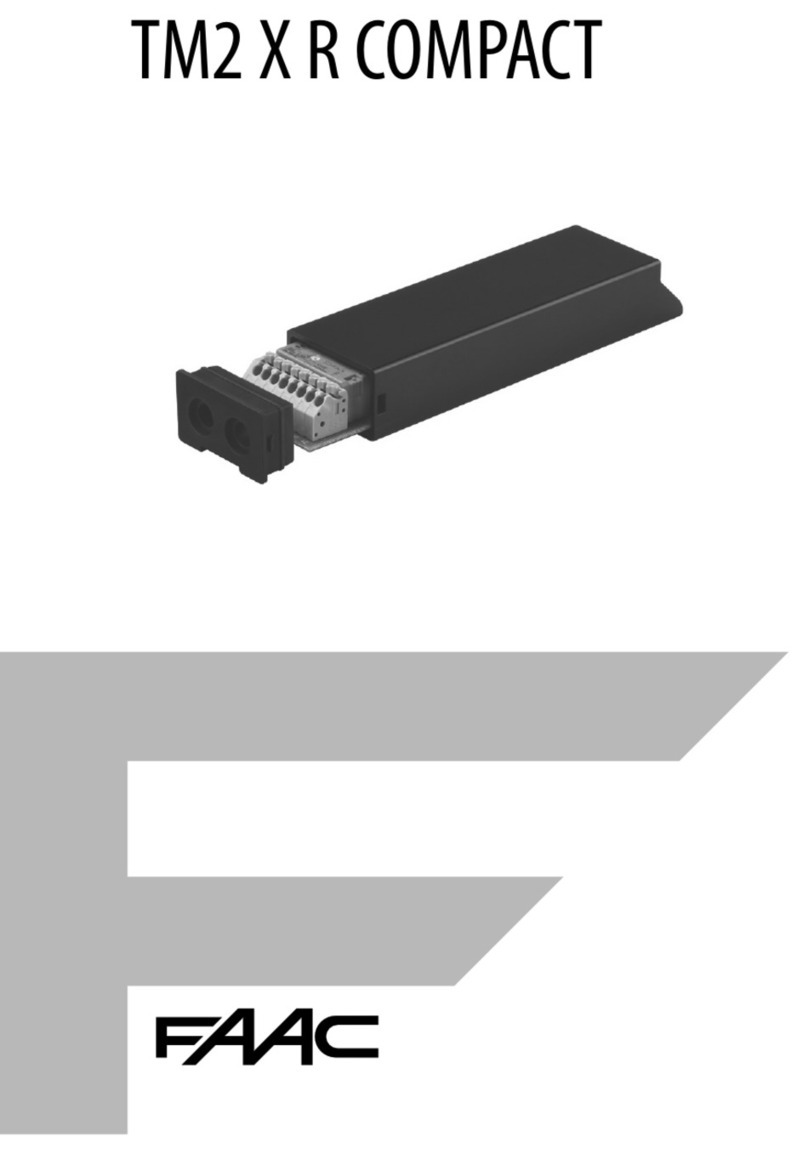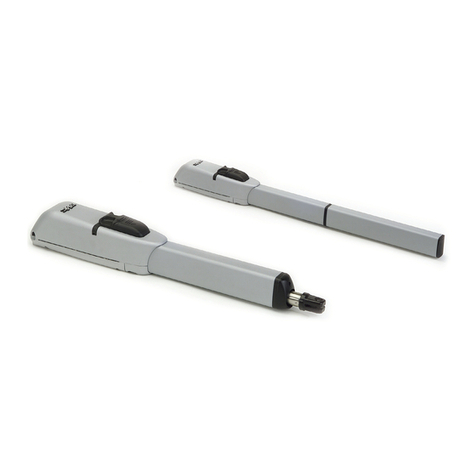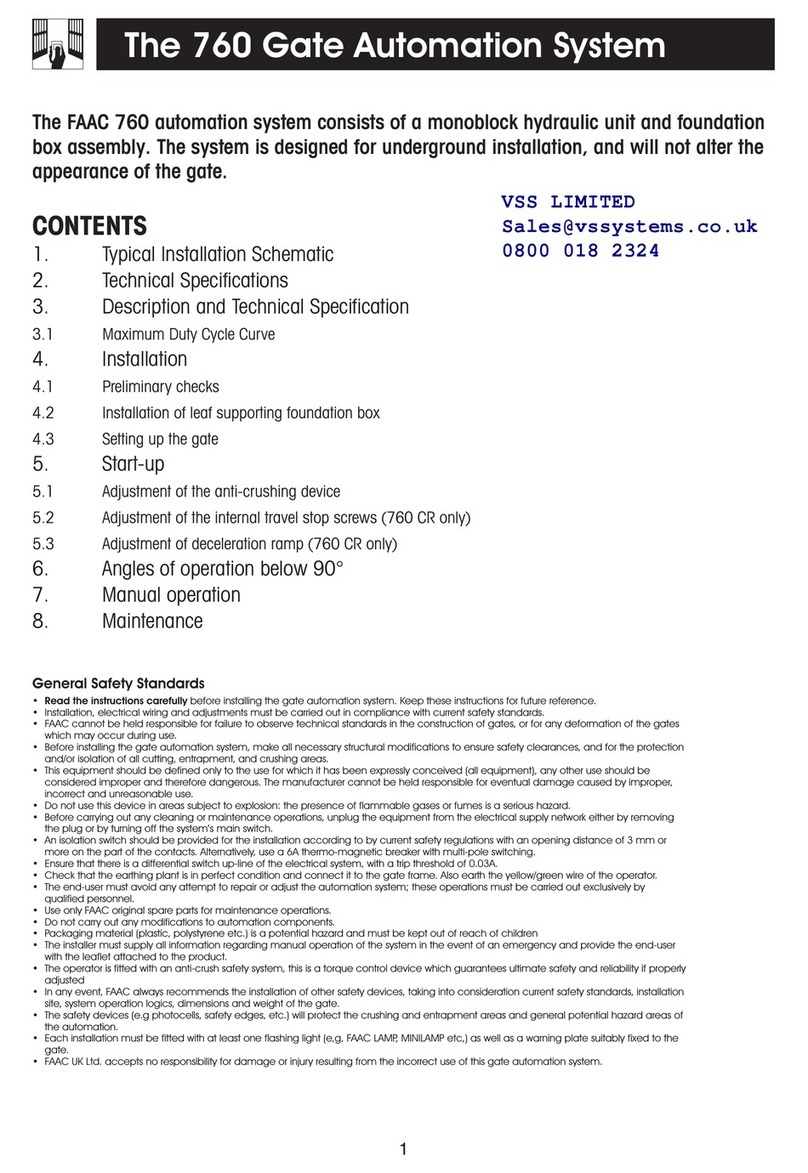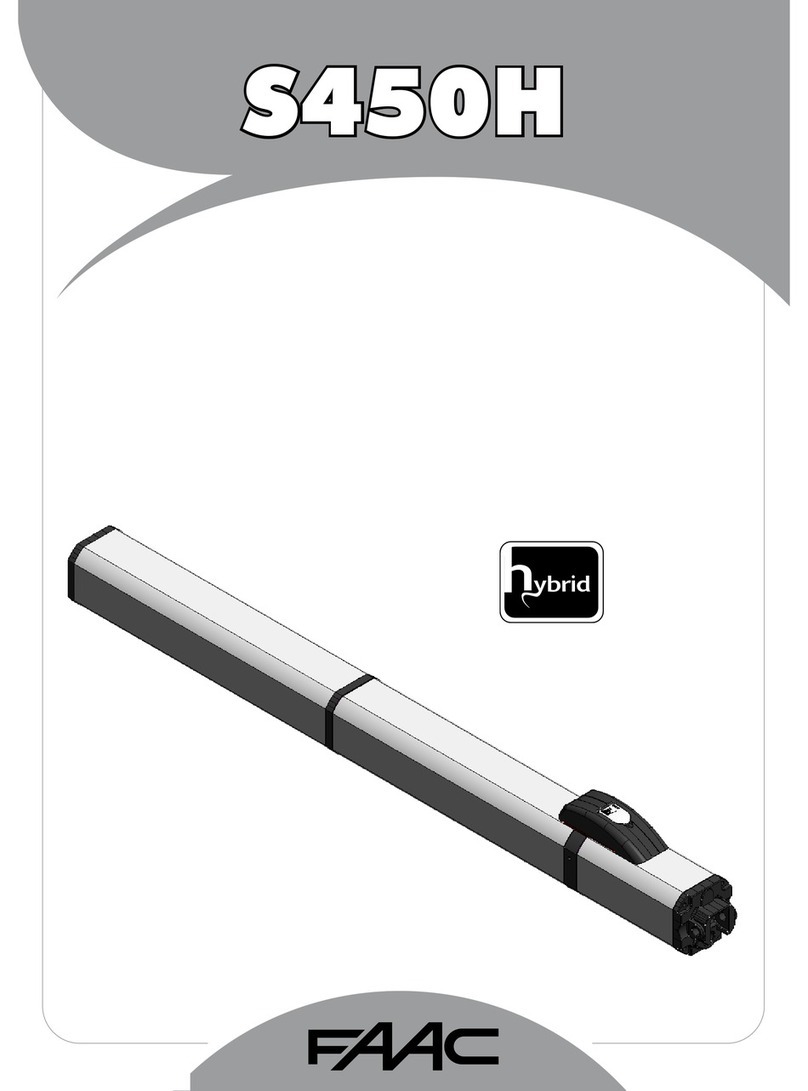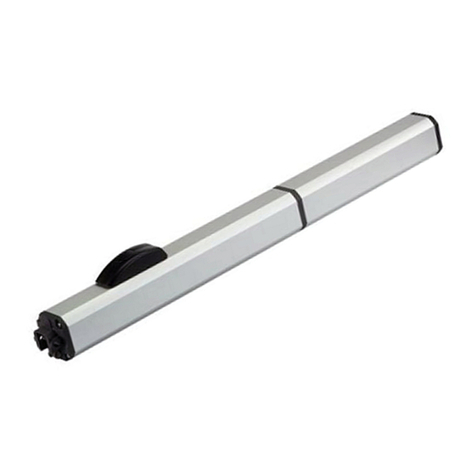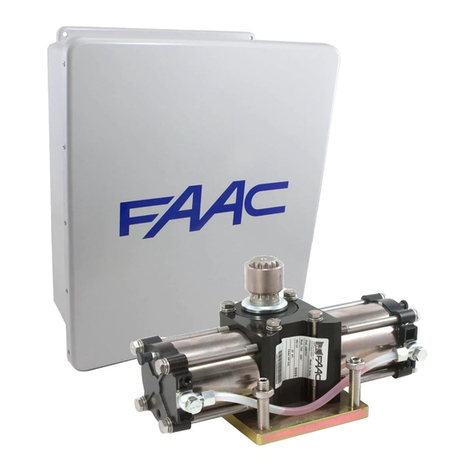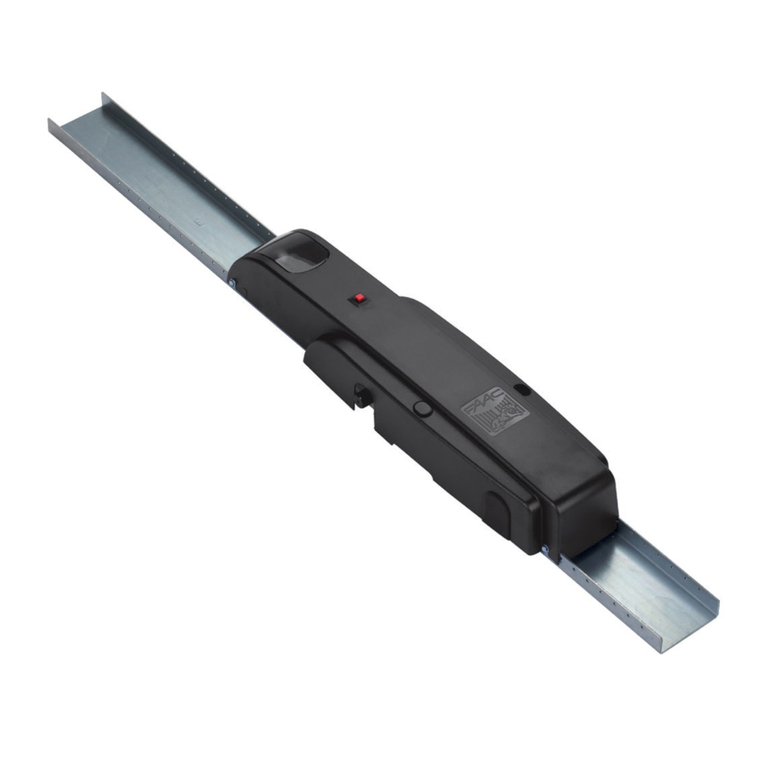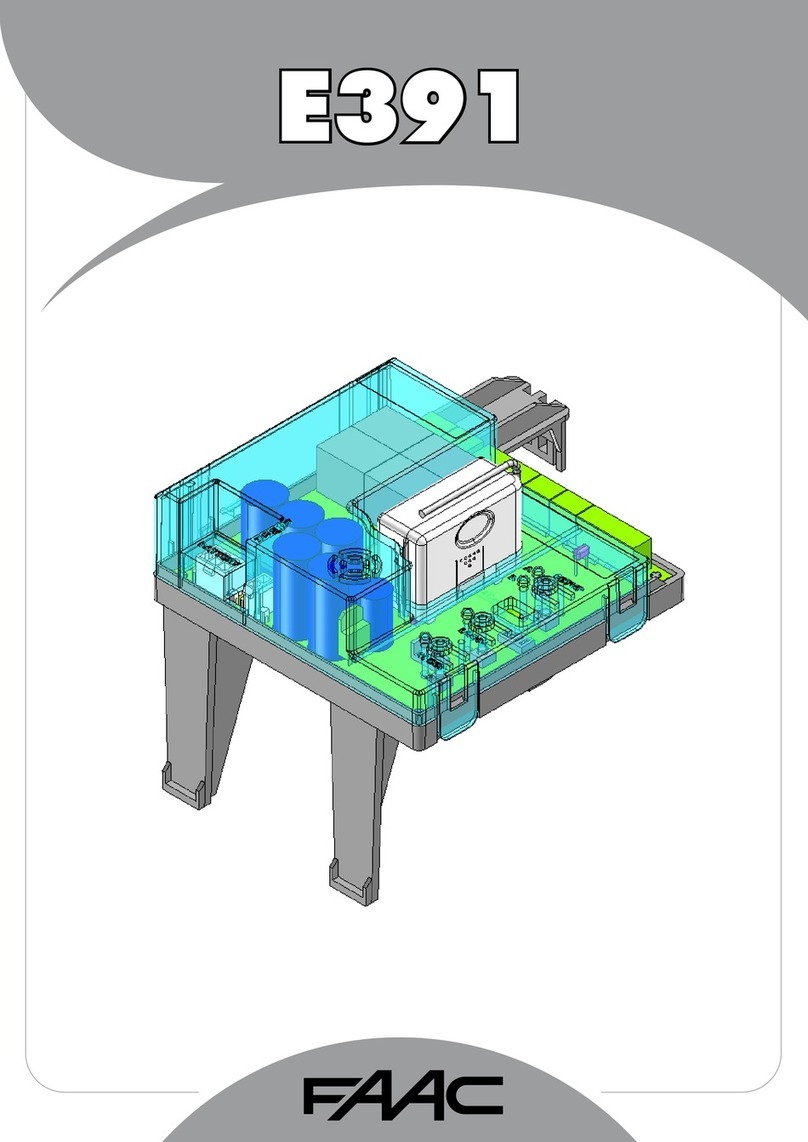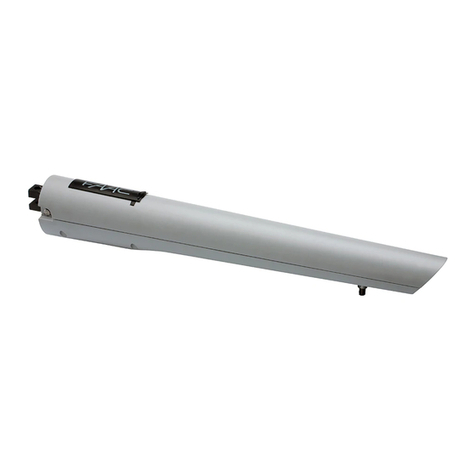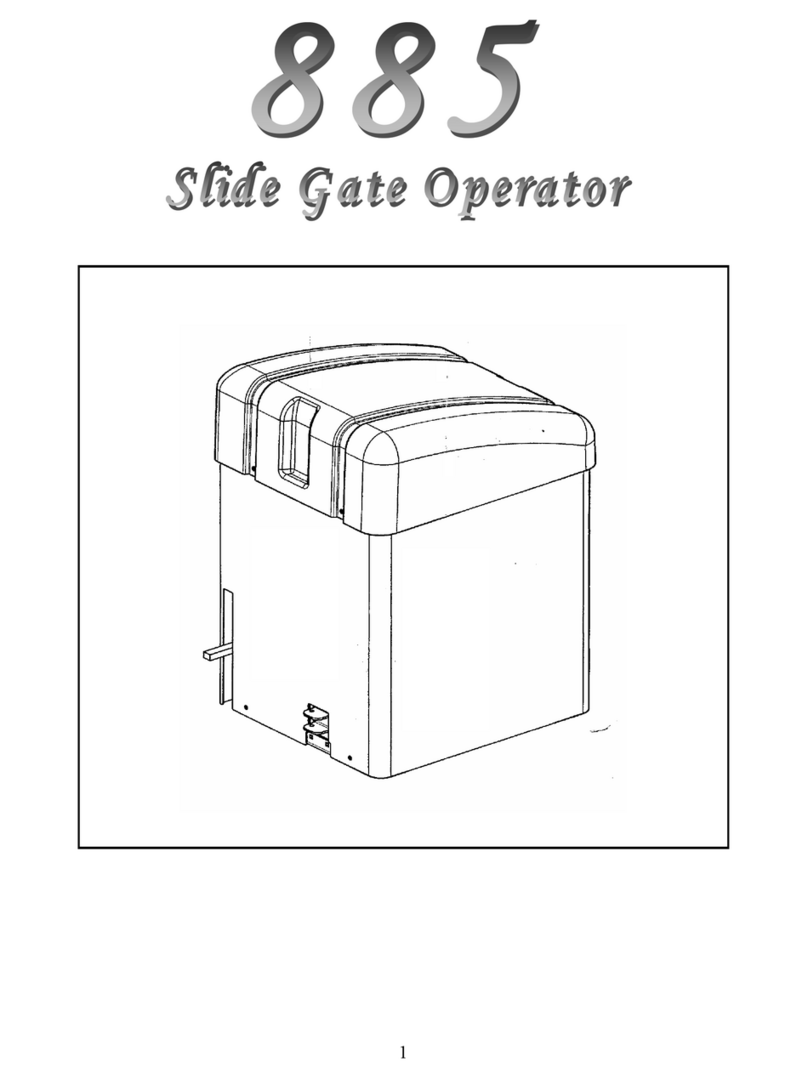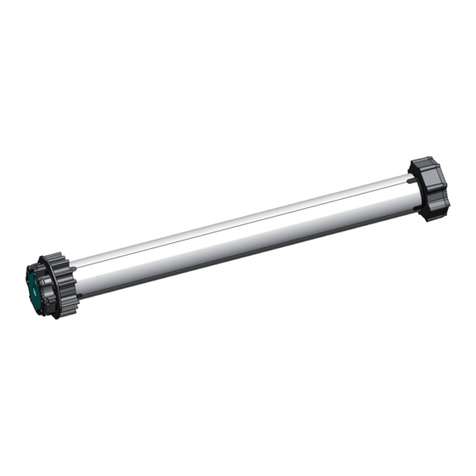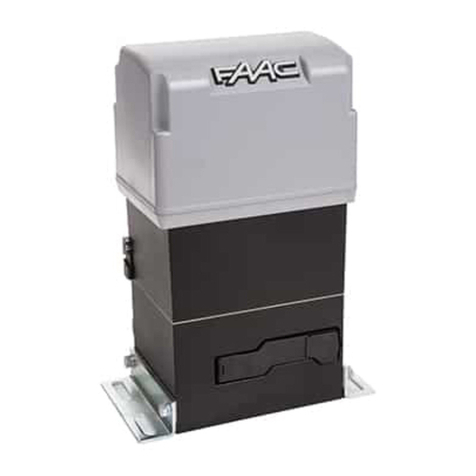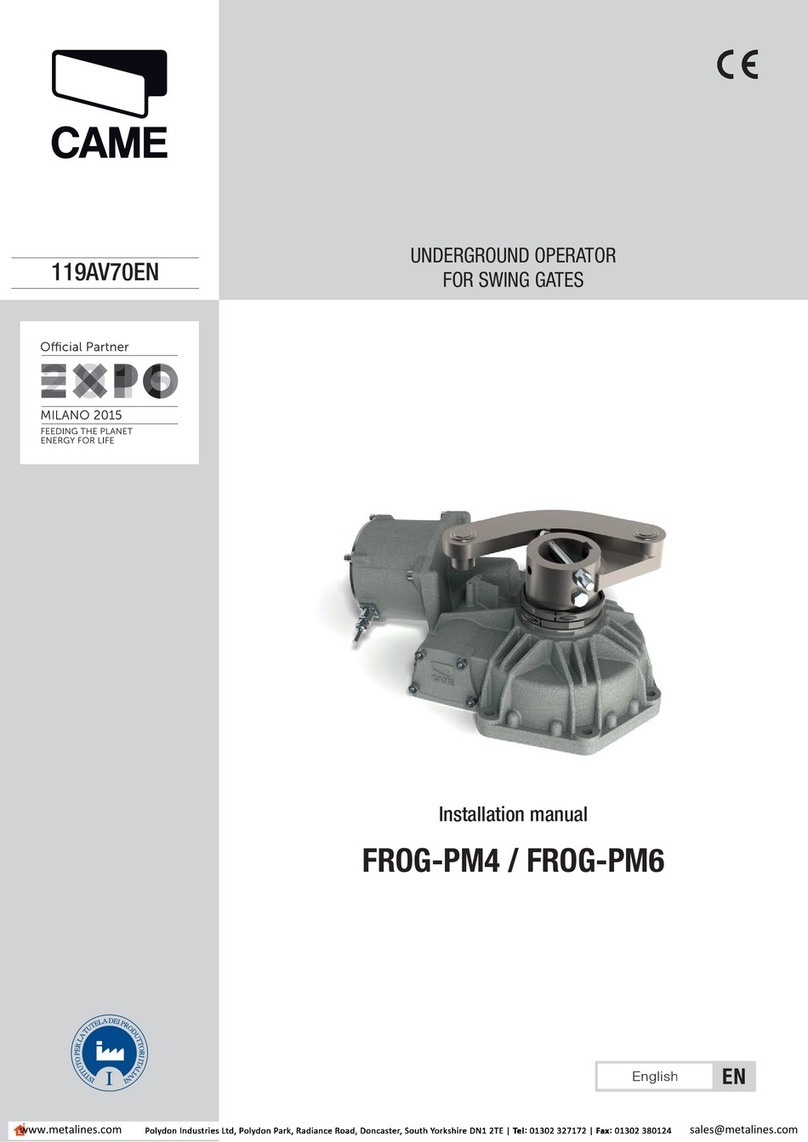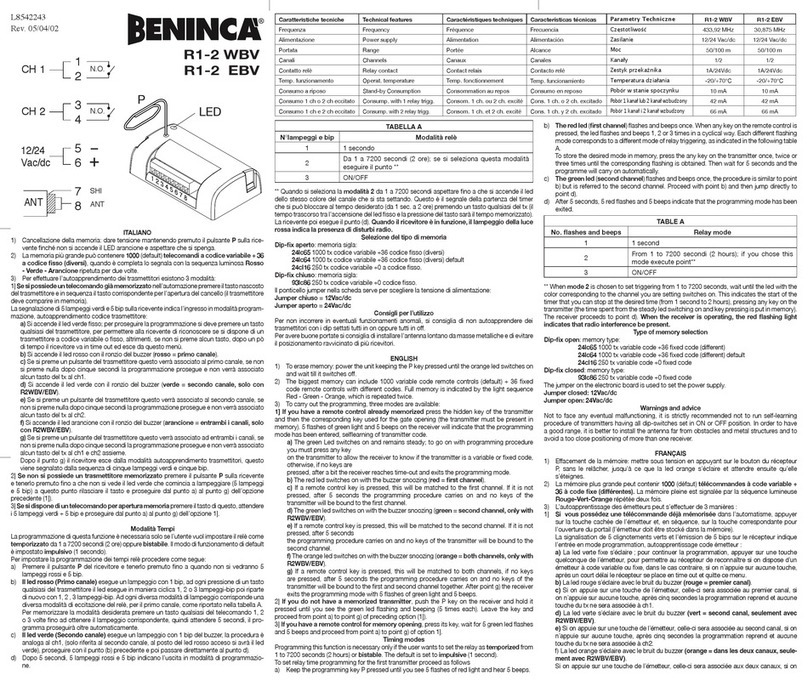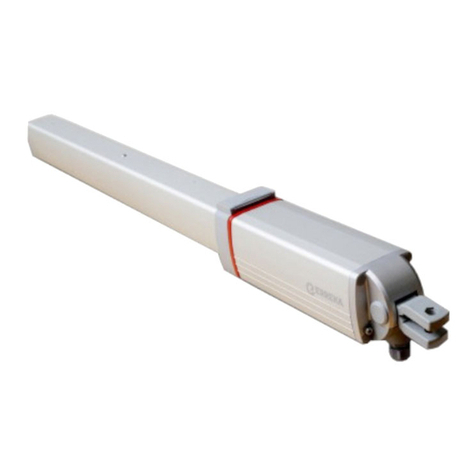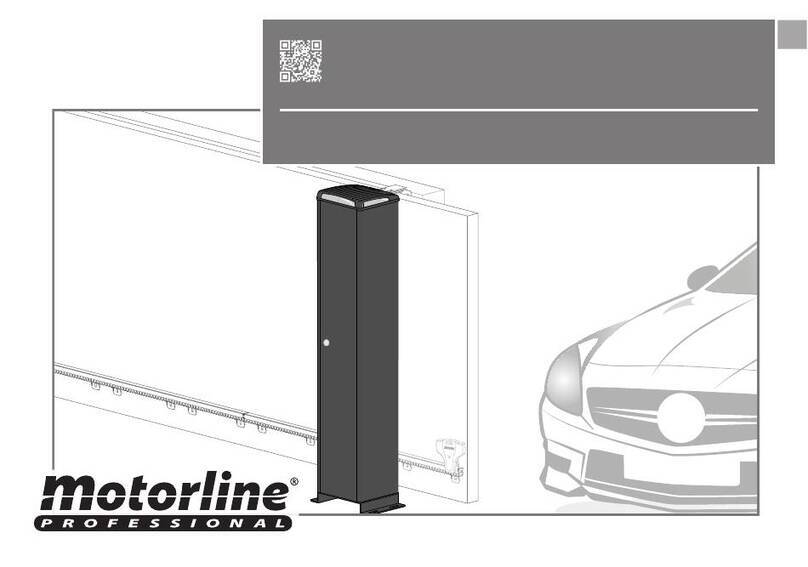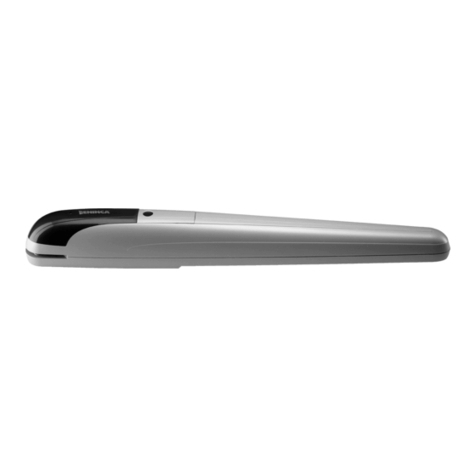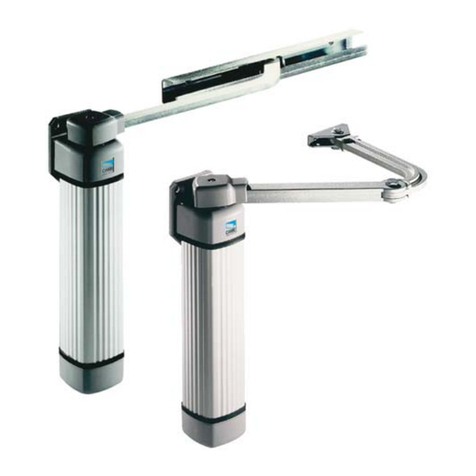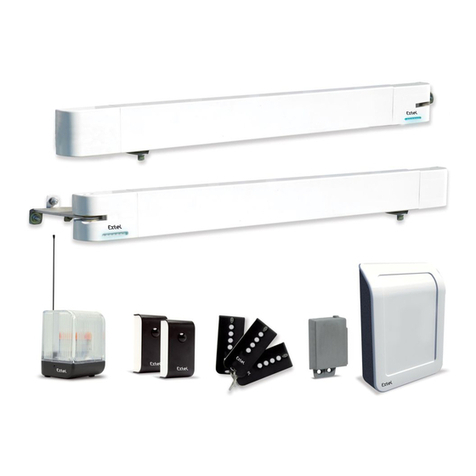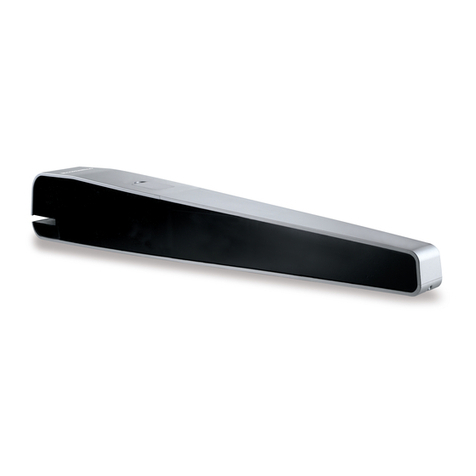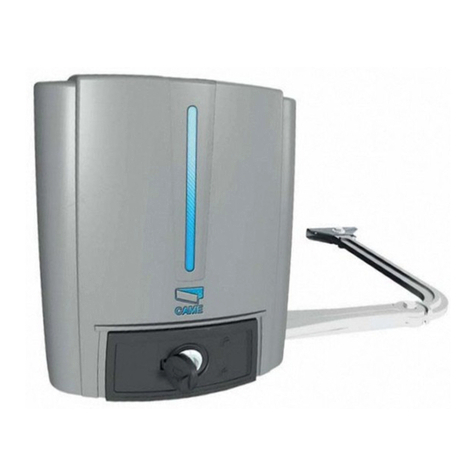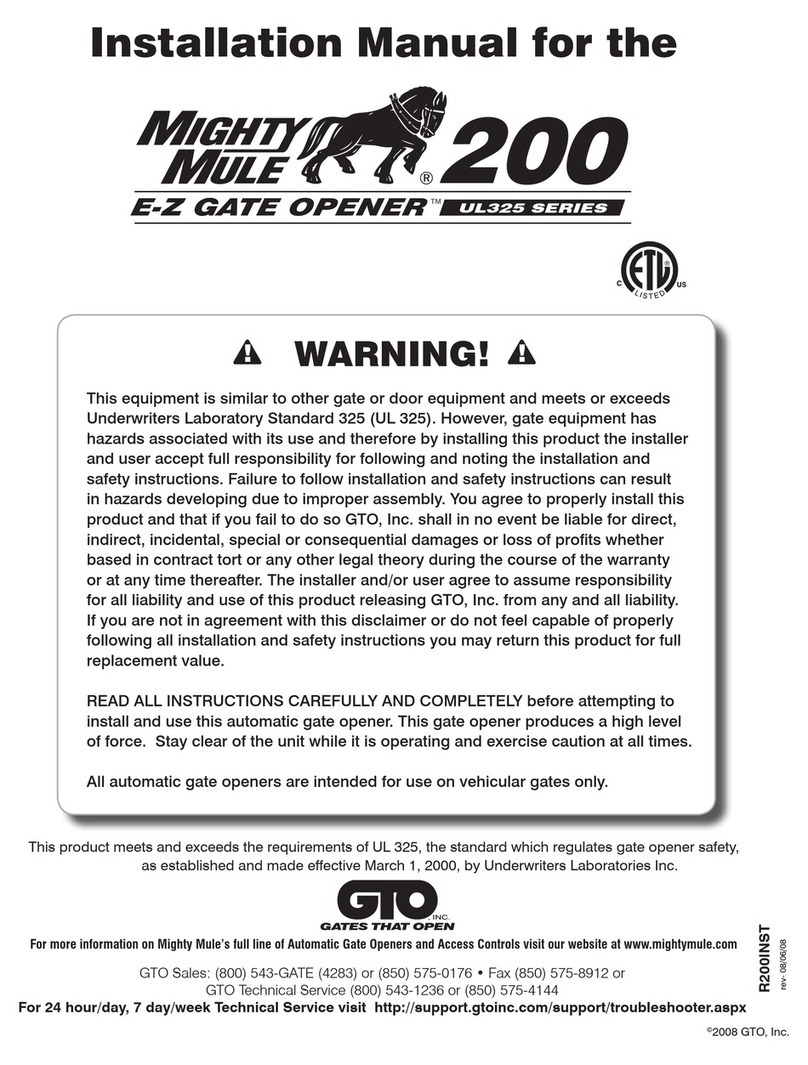
IMPORTANT SAFETY INFORMATION
Important User Instructions .................................... 3
Restrictions & Warnings ........................................ 3
Internal Entrapment Prevention ............................. 5
External Entrapment Prevention ............................ 5
Manual Release .................................................... 6
UL325 Gate Operator Classification ...................... 7
Glossary Of Terms ................................................ 7
Warning Sign Installation ....................................... 8
Installation Precautions ......................................... 8
Pre Installation Guidelines ..................................... 8
TECHINCAL SPECIFICATION
Gate Operator Specifications ................................. 9
GATE OPERATOR INSTALLATION
Gate Operator Location ....................................... 10
Concrete Pad Size & Location ............................. 11
Gate Operator Bolt Down .................................... 12
Chain Connection - Front Mount .......................... 12
Chain Connection - Rear Mount .......................... 13
Limit Switch Setup ............................................... 14
Gate Operator Direction ...................................... 14
ELECTRICAL INSTALLATION
Power Switch Location ........................................ 15
AC Power Guidelines .......................................... 15
AC Power Connection ......................................... 15
Battery Power Connection ................................... 16
Accessory Power ................................................. 16
Master/Slave Connection .................................... 17
GATE OPERATOR ADJUSTMENTS
Reverse Sensitivity Adjustment ........................... 18
Reverse Sensitivity Shutdown ............................. 18
Close Time Delay Adjustment ............................. 19
DIP Switch Settings ............................................. 19
ACCESSORY CONNECTIONS
Accessory Wire Overview .................................... 20
Edge Sensor Connections ................................... 21
Photo Sensor Connections .................................. 22
Standard Reverse Connections ........................... 23
Open, Close, Stop Connections .......................... 23
External Reset Connection .................................. 23
Access Control Connection ................................. 24
Fire Lock Connection ........................................... 24
Radio Receiver Connections ............................... 25
MagLock & Solenoid Lock Connections .............. 25
Alarm & Warning Light Connections .................... 26
Solar Panel Connections ..................................... 26
LOOP & LOOP DETECTORS
Basic Loop Layout ............................................... 27
Loop Installation Guidelines ................................ 27
Plug-In Loop Detector Connections ..................... 28
External Loop Detector Connections ................... 28
TROUBLESHOOTING TIPS
Fault Light Count ................................................. 29
SPARE PARTS
.. . ......................................................................... 30
LIMITED WARRANTY
Limited Warranty ................................................. 32
Read and follow all U.L. and Safety Standards before installing any access device. Please refer to this manual and
qualified personnel for assistance. DO NOT install this device unless all entrapment and pinch points are eliminated.
!
T
TABLE
ABLE
O
OF
F
C
CONTENTS
ONTENTS
FSL700 Slide Gate Operator 2
Revision A
